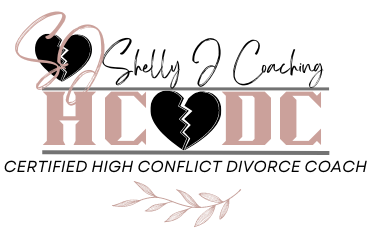What the “Contrary Action Method” is and How to Use it to Manage Anxiety
Today I was listening to an episode of the podcast, “Navigating Narcissism” by Dr. Ramani Durvasula, PhD. and this concept was brought up. Although I am familiar with the method, I had never heard it called Contrary Action before.
Dr. Ramani was interviewing Juliet Landau about growing up with famous, narcissistic parents in Hollywood and how the narcissistic abuse she suffered affected her life. To learn about Juliet’s movie about her experience, CLICK HERE.

Dr. Ramani stated this:
“Juliet used this (contrary action) as a tool to manage her healing from narcissistic relationships. It’s a tool often suggested in managing anxiety. We’re basically doing the “thing” that we are afraid to do or were told we couldn’t do. It’s almost an act of abandonment. It can feel like a folly and can be scary to do these things. Many people in toxic, antagonistic, or narcissistic relationships clip their own wings and believe the negative talk that these relationships fill us up with:
‘You’ll never amount to anything.’
‘Who do you think you are?’
‘You aren’t smart enough to do that.’
‘Who would ever listen to you?’”
“Contrary Action may feel like a ridiculous leap of faith, like jumping into the ocean in January, but when you do it, you never know what you may find out about your limitless capacities.”
Once Juliet learned that what she had been experiencing was narcissistic abuse, she began to search for ways to heal from her childhood trauma. While she used the contrary method to manage her anxiety, it was only one of several things she did to heal from the narcissistic abuse her famous parents put her through.
If you plan to implement this method, please be wise in doing so. Have a good supportive team around you and start with small things. As you take small steps in your healing it will begin to build your emotional resilience muscles. Baby steps are key. Know your capacity to confront your fears as it can be triggering.
3 Steps to Implement Contrary Action
1. Preparation:
– Choose a Small Decision: Start with something manageable, such as deciding what to have for dinner or what movie to watch.
– Gather Information: If necessary, gather information to make an informed choice. For example, look up recipes or movie reviews.
2. Action:
– Make the Decision: Commit to your choice without seeking approval or validation from others.
– Follow Through: Act on your decision, such as cooking the chosen meal or watching the selected movie. When you commit and follow through, you begin to build trust and a new relationship with yourself.
3. Reflect:
– Evaluate the Outcome: Afterward, reflect on how making the decision felt and what the outcome was.
– Affirm Your Capability: Remind yourself that you are capable of making good decisions.
What does Contrary Action Look Like?
Scenario #1:
Let’s say your abuser constantly criticizes you, making you feel worthless. As a result, you avoid social situations because you fear judgment.
Contrary Action Step:
Despite your anxiety, you decide to attend a social gathering. You engage with others and seek positive interactions, challenging the negative beliefs instilled by the abuser.
Scenario #2:
You have been conditioned to avoid making decisions because your abuser constantly undermined your choices and made you feel incapable.
Contrary Action Step:
Despite feeling anxious about making decisions, you choose to make a small, independent decision and follow through with it.
Personal example:
I remember being in this situation. Several months after my divorce, I needed to sell my car and get something more economical. My ex-spouse had always bought and taken care of our family vehicles because he used to be an auto-mechanic. So, this was kind of a big deal for me as he had always made me feel like I was stupid and couldn’t possibly make this type of decision on my own. I sold my car and purchased a new-to-me car. I made a really good decision and the car was reliable and fun. This was a turning point for me. It gave me the boost of confidence I needed. From there, I was finally able to see a brighter future than the ugly past I had left behind. I began making other decisions that greatly benefited me and my children. It works.
A Contrary Action Example in Practice
You decide to start a new hobby, such as painting. Despite anxiety about not being good enough (a belief instilled by your abuser), you purchase some supplies and start painting.
You enjoy the process and create something you’re proud of, reinforcing your ability to make positive choices.
Conclusion: Benefits of Managing Anxiety with Contrary Action
How does this help me manage my anxiety?
On the surface, this can seem like it would increase anxiety. While you may feel fear or anxiety as you take the first or second steps, understand this is normal. By facing your emotions in this manner, you are teaching your brain and body that you don’t need to be afraid of the “thing”. You are teaching yourself that it is going to be OK and that you will be ok.
You will begin to rebuild your self-esteem and reduce your anxiety over time. Successfully making and acting on decisions will help rebuild your confidence and sense of autonomy. Taking action despite anxiety challenges the self-doubt instilled by the abuser. Making independent decisions fosters a sense of independence and self-reliance. By taking these small steps, you gradually rebuild your decision-making confidence and challenge the negative conditioning from the abuse. And, always be patient and compassionate with yourself through the process.
